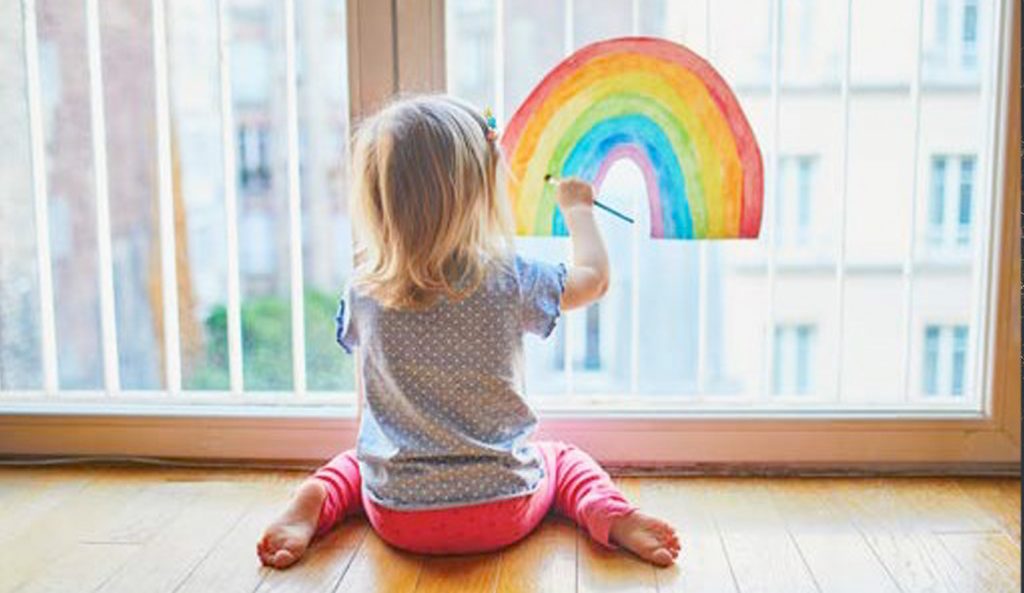
As the coronavirus disease (COVID-19) continues to spread across the world, it has dramatically changed our way of life in a very short period of time. With stay-at-home orders occurring nationwide, the impact of social distancing and home confinement has affected many aspects of our children’s lives. Imagine having to learn that they can’t go back to school, see their friends, or play a game with their soccer team. Children are more vulnerable to traumatic changes because they depend on interactions with their teachers, peers, and group activities to nurture their emotional and social development (Racco et al, 2015; Wang et al, 2020). They may struggle to grasp with adjustments to their routine, feeling isolated from everyone, and having to accept and adapt to the new reality they are living in now (Weaver et al, 2015).
It is unclear how social distancing and isolation affects children but their experience and response to stress are much different from adults. Young people- even infants and toddlers- can notice and sense anxiety, worry, and fear from people and their environment. Physical signs can appear as headaches, stomach pain, feeling tired, not eating or sleeping well, or overeating. Mental and emotional responses can be expressed as temper tantrums, crying, anxiety, irritability, withdrawal from their normal activities or hobbies, feeling sad and sensitive, being clingy, or seeking attention. These are normal physiologic responses to stress in children, but parents and caregivers can be there to provide support and teach coping skills that will help our kids successfully get through these challenging times (Wang et al, 2020).
Here are ways that we can help our kids cope with stress:
- Talk to them with honesty and compassion. Give them space to navigate and recognize their emotions and feelings. Sharing stories together can be healing for your children and family. In these uncertain times, children need trust, comfort, and reassurance from a responsive and sensitive caregiver (Weaver et al, 2015).
- Be engaged and active! Go for walks with the family, plant a garden, play outside with siblings in the yard, or participate in mind-body exercises such as yoga or meditation during at-home physical activity sessions. Provide safe spaces and environments that they can engage in fun learning experiences and therapeutic activities (i.e. art, playing music, board games, science experiments) (McClafferty et al, 2016).
- Stay connected. Social distancing does not mean isolating from our loved ones. Surround them with the support of their family and friends through social networks. Set up times during the week to FaceTime or Zoom conference calls with grandparents, cousins, neighbors, and friends.
- Practice gratitude and appreciation. Have a daily exercise through artwork or journaling about what they are thankful for and appreciate every day. Make a gratitude jar or box. Have your kids decorate it and fill it with notes that make them feel joyful and happy.
- Create solutions and opportunities that promote positivity. Kids can take the opportunity to turn this difficult time into a positive experience. Make a time capsule of memories about this year and have them contribute special items or messages that they can share in the future. Involve your kids in community building activities by sending letters of support and encouragement to their friends, family members, and frontline workers.
Stress impacts children in many ways (physically, mentally, and emotionally) but their resilience and ability to develop healthy coping mechanisms is key to getting through this unprecedented time in their young lives. If we emphasize hope and positivity, our children can be prepared, feel safe and supported, and find the confidence and strength to overcome adversity during the COVID-19 pandemic.
References
McClafferty, Hilary, Timothy Culbert, and Lawrence Rosen. “Mind-body therapies in children and youth.” Pediatric Care Online (2016).
Racco, Angela, and Jo-Ann Vis. “Evidence based trauma treatment for children and youth.” Child and Adolescent Social Work Journal 32.2 (2015): 121-129.
Wang, Guanghai, et al. “Mitigate the effects of home confinement on children during the COVID-19 outbreak.” The Lancet 395.10228 (2020): 945-947.
Weaver, Meaghann S., and Lori Wiener. “Applying Palliative Care Principles to Communicate with Children about COVID-19.” Journal of Pain and Symptom Management (2020).